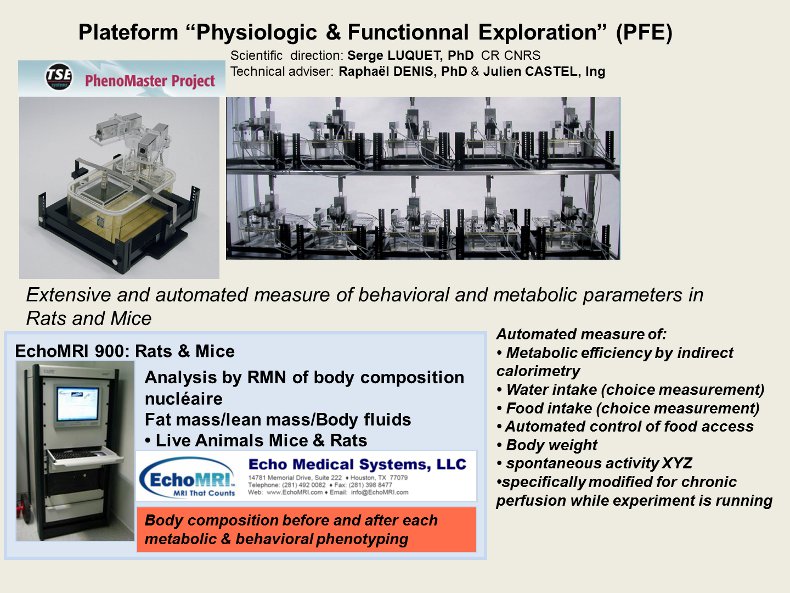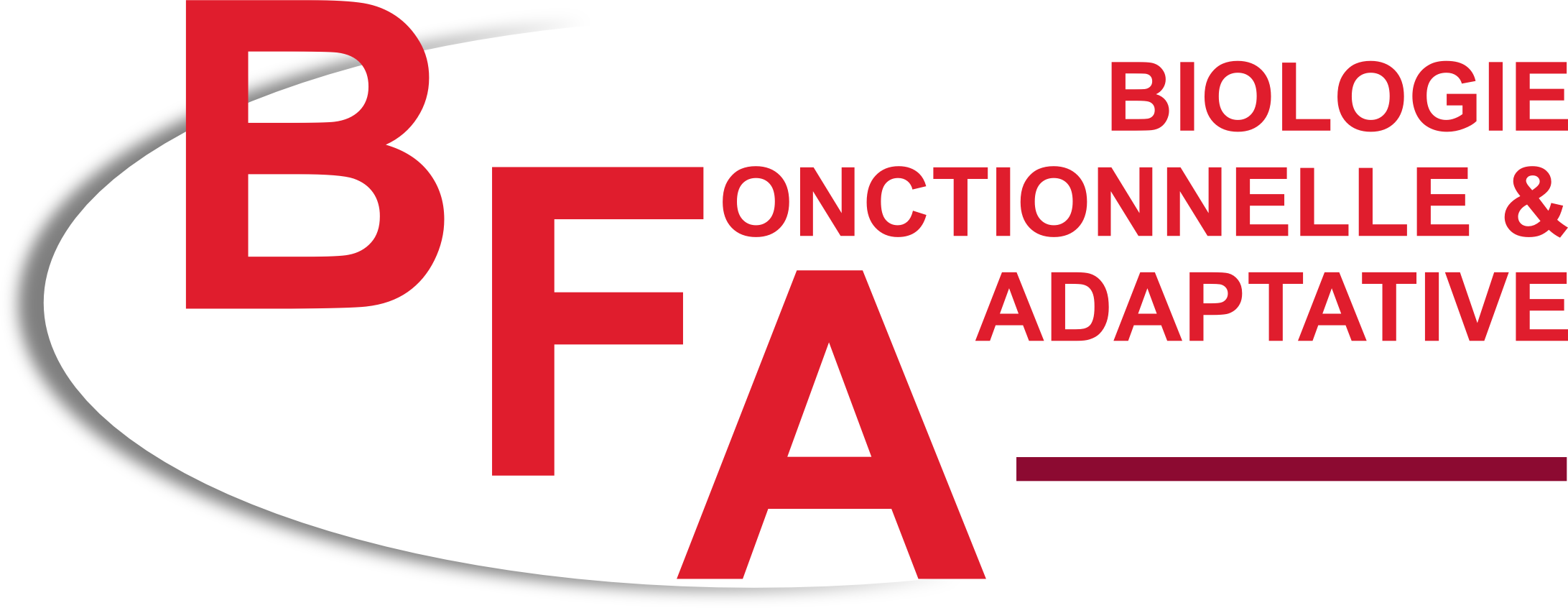Functional & Physiological Exploration Facility (FPE)
Scientific coordinator: Serge Luquet, PhD (DR CNRS)
Technical adviser: Julien Castel (AI CNRS)
If you want to use the Metabolism Platform, please read the “charte”of the platform and fill and return the “Fiche de demande d’utilisation” .
Energy Homeostasis is maintained by a complex interplay of peripheral and central signals that gather information on the body’s nutritional status and are integrated to provide appropriate behavioral and metabolic responses to modified fuel availability. Disruption of this regulation gives rise to life-threatening conditions that include anorexia nervosa at one extreme and obesity-related disease such as atherosclerosis, hypertension, coronary disease, and diabetes mellitus at the other end of the spectrum. To maintain body weight, energy input through food intake is balanced with energy expenditure which itself is a composite equation of physical activity+resting metabolism+thermogenesis. A defect in its former equilibrium could lead to the above-mentioned physiopathology. As complex as these processes may be, the first law of thermodynamic states that energy is neither created nor destroyed but is transformed. The philosophy of the EPF facility is an integrated view of this statement at the physiological level. The facility is able to carry out preclinical analysis (rats and mice) of all the physiological parameters that may be involved in regulating the energy balance in some way. The Functional & Physiological Exploration facility (FPE) carries out preclinical non-invasive and fully automated measurement (rats and mice) of food and water intake as well as food choice, O2 consumption, CO2 production, respiratory quotient (as an indicator of glycolic or oxidative metabolic status), whole energy expenditure together with tridimensional (X, Y, Z) spontaneous activity and fine movement (Phenomaster, TSE Systems GmbH). The facility can also carry out non-invasive Whole Body Composition analysis using RMN technology and an EchoMRI 900 scanner (Echo Medical systems, Houston, USA).This system does not require anesthesia and determines lean, fat, free body fluid content, and total body water of rats and mice having a total mass between 25 and 900 grams. Note that the cages have been modified to allow chronic perfusion through arterial vein while collecting all the above-mentioned parameters. This modification provides the unique opportunity to test the efficiency of pharmacological compounds in terms of energy expenditure and feeding behavior. (Practical Handbook for calorimetry)
Finally, a recent addition was made to the facility through an equipment grant co-supported by Region Ile de France (cardio obesity diabetes DIM) for the telemetric measurement of cardiac activity and internal body temperature, collection and measurement of urine and feces combined with calorimetric measurement. Furthermore, this addition facilitates the behavioral analysis of hedonic value of a stimulus through conditioned place preference paradigm together with the assessment of cognitive ability assessment and behavioral reinforcement in operating chambers.
The exploration of energy metabolism has been extended to small invertebrates through the acquisition of a metabolic measurement system: Calofly system (Sable Systems International) supported by the teams of Drs Serge Luquet and Hervé Tricoire. This facility consists of a set of 32 metabolic chambers connected to ultra-sensitive O2 and CO2 detectors to measure the oxygen consumption and carbon dioxide emission of a single fly over several days. Each cell is also equipped with activity detectors to correlate the animal’s circadian locomotor activity with its metabolic activity.
The FPE facility has processed two research contracts since its inception in 2009, one with a private company (KOT-CEPRODI) and the other with an academic laboratory (INSERM U872), and has been the cornerstone of multiple collaborative research projects both nationally and internationally. (INSERM U845, U855, U939, U837, Institut Cochin, Institut Jacques Monod, IRBHM Brussel, Belgium, Institut de Biomédecine de Valence, Spain).



